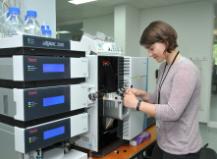Our Facilities
Our services exploit the very latest technologies; the Centre has seven state-of-the-art instrument located in purpose-built labs in both the Departments of Biology and Chemistry on the University's Campus West.
solariX
solariX XR FTMS 9.4T
The solariX XR FTMS is a very high-performance hybrid Qh-FT-ICR instrument with ultimate resolving power in excess of 10,000,000. The solariX has a wide range of uses, including top-down protein characterisation, exact mass determination for unambiguous identification of small molecules, analysis of very complex mixtures, and even MALDI imaging.
Our solariX is equipped with a dual ESI/MALDI source base on ion funnel technology, which allows instantaneous switching between ESI and MALDI, and the new CryoSpray source for ionization of labile complexes, as well as a Triversa NanoMate for reproducible, automated sample introduction.
Dissociation methods available for tandem MS with our instrument include:
- CID in collision cell and funnel
- ETD (Electron Transfer Dissociation)
- ECD (Electron Capture Dissociation)
- SORI (Sustained Off-Resonance Irradiation)
- IRMPD (Infrared Multiphoton Dissociation)
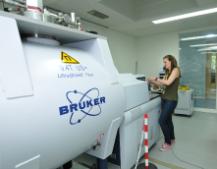
Orbitrap Fusion
Thermo Scientific Orbitrap Fusion™ Tribrid™
The Thermo Scientific Orbitrap Fusion™ Tribrid™ is the top of the range hybrid mass spectrometer based on the Orbitrap mass analyser. It offers unrivalled sensitivity and very high resolution and mass accuracy which, with a range of ionisation sources (including electrospray, nanospray, and APCI), bring advantages to a wide range of applications. Its design offers huge flexibility in how the instrument can be used, making it an excellent research facility for particularly challenging questions and non-routine experiments.
Its capabilities find use in many applications, including proteomics (where the instrument’s speed allows outstanding proteome penetration), and metabolomics (where the high resolution and mass accuracy in the precursor measurement offer real performance gains). The instrument is fitted with two different energy regime collision induced dissociation options as well as electron transfer dissociation to induce fragmentation, and its design makes possible up to ten stages of tandem MS measurement with high mass accuracy using the Orbitrap mass analyser.
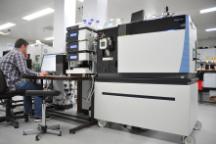
ultrafleX
ultrafleX III
The ultrafleX III is a MALDI-TOF/TOF instrument with excellent capabilities for protein identification, peptide sequencing and a range of other analyses including glycan sequencing. In addition, this instrument is able to perform in-source decay (ISD) on intact proteins for determination N- and C-terminal sequences by T3 sequencing, and its smartbeam™ laser is designed for high-resolution MALDI imaging.
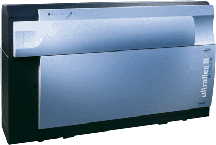
HCT
HCTultra ETD II
The Centre has two HCT ultra ETD II ion traps. Both instruments are capable of CID and electron transfer dissociation (ETD), which is complementary to CID for peptide sequencing and is ideal for identifiying and locating post-translational modifications of proteins, e.g. phosphorylation and glycosylation.
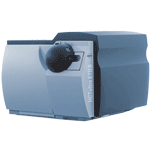
maXis
maXis
The maXis, launched by Bruker at ASMS 2008 in Denver, then upgraded to the G3 and now to the HD, has the unique ability to deliver high resolution and mass accuracy on an HPLC timescale. These capabilities find use in many applications, including proteomics (where they greatly increase the number of proteins confidently identified in shotgun proteomic experiments, and allow much more reliable de novo peptide sequencing), and metabolomics (where the high mass accuracy and LC compatability offer major advantages).
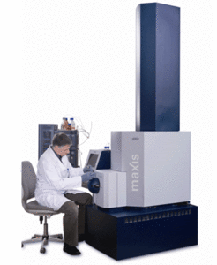
Endura
Thermo Scientific TSQ Endura™
The Thermo Scientific TSQ Endura is a triple quadrupole instrument for LC-MS/MS analyses, and is a very powerful tool for quantitative analyses. It has both electrospray and atmospheric pressure chemical ionisation (APCI) sources. Using collision induced dissociation in the second quadrupole, it offers precursor ion scanning, constant neutral loss analysis and selected/multiple reaction monitoring. Precursor ion and neutral loss experiments are used to identify families of analytes, that fragment to give a common fragment ion (precursor ion analysis) or by loss of a common neutral (constant neutral loss experiment). Selected/multiple reaction monitoring experiments allow generally very good limits of quantitation of specific analytes.
